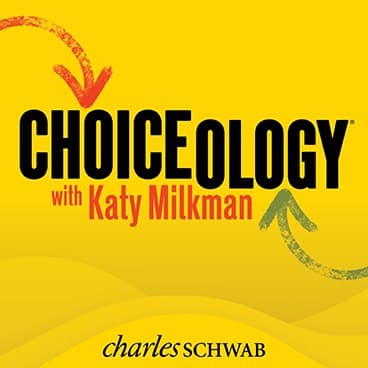Cents & Sensibility: With Guests Melina Palmer & Devin Pope
Would you pay more for a car with 29,999 miles than one with 30,000? The answer should be no—it's a negligible difference, after all—but research shows that people often do pay more than they should for cars that are just short of certain odometer thresholds.
In this episode of Choiceology with Katy Milkman, we look at why a price or an age or a test score that falls just under a round number has an outsized impact on our decisions.
We hear from Melina Palmer, author of The Truth About Pricing, as she unpacks how the launch of iTunes—and its iconic per-song price—reshaped the music industry. Joshua Freedman, host of the Rapaport Diamond Podcast, explains why stones just shy of round carat weights are in high demand. And Bapu Jena, the host of the podcast Freaknomics M.D. and co-author of the book Random Acts of Medicine, reveals how deeply numbers shape medical decisions—and what that means for patients.
Next, Katy speaks with Devin Pope, the Steven G. Rothmeier Professor of Behavioral Science and Economics at the Booth School of Business at the University of Chicago. Devin researches a variety of topics at the intersection of economics and psychology. In this episode, he shares his research involving cars–what we'll pay for them, what we pay to ride in them, and why.
Learn more about behavioral finance.
Explore more topics
The comments, views, and opinions expressed in the presentation are those of the speakers and do not necessarily represent the views of Charles Schwab.
Data contained herein from third party providers is obtained from what are considered reliable source. However, its accuracy, completeness or reliability cannot be guaranteed and Charles Schwab & Co. expressly disclaims any liability, including incidental or consequential damages, arising from errors or omissions in this publication.
All corporate names and market data shown above are for illustrative purposes only and are not a recommendation, offer to sell, or a solicitation of an offer to buy any security.
The policy analysis provided by the Charles Schwab & Co., Inc., does not constitute and should not be interpreted as an endorsement of any political party.
Investing involves risk including loss of principal.
The books How to Change: The Science of Getting from Where You Are to Where You Want to Be, The Truth About Pricing, and Random Acts of Medicine are not affiliated with, sponsored by, or endorsed by Charles Schwab & Co., Inc. (CS&Co.). Charles Schwab & Co., Inc. (CS&Co.) has not reviewed the books and makes no representations about its content.
Apple, the Apple logo, iPad, iPhone, and Apple Podcasts are trademarks of Apple Inc., registered in the U.S. and other countries. App Store is a service mark of Apple Inc.
Spotify and the Spotify logo are registered trademarks of Spotify AB.



